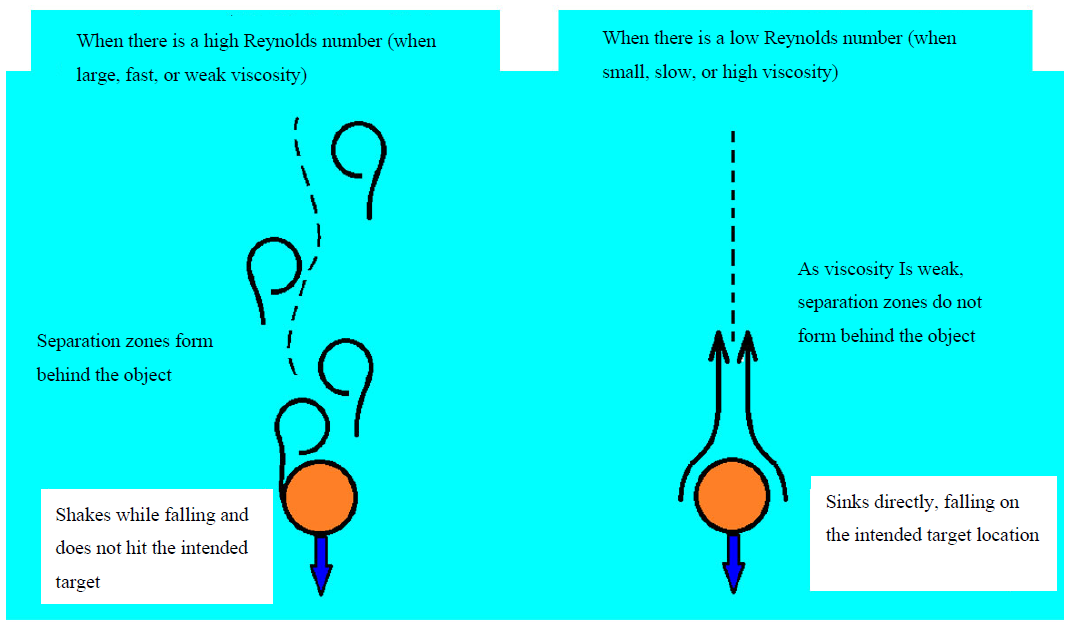Drop on intended target 3
Let's take a look!
What type of experiment is this?

Experimental procedure and explanation:
- We devise a way to drop the precisely onto the intended target area. Here, large viscosity syrup is used, diluted twice with water.
- For the particles, in the same way as “Drop on intended target 2”, glass beads of approximately 1.5 mm in size were used.
- Reynolds number Re is smaller than that of water, making it harder for a separation vortex to form behind the sphere. The Reynolds number Re can be calculated using the following equation
Re = U L /ν
Let U be the settling velocity [m/s], L the representative length [m] (reference dimension, diameter for a sphere), and ν be the kinematic viscosity of the fluid. - Reynolds number Re is less than 1, the effect of viscosity is very strong, and no separation vortex is generated. Even below about 10, asymmetric detachment vortices are unlikely to form and will not shake.
- By increasing the viscosity of the liquid, the particles sink straight down and settle in the intended area. One way is to use salad oil or other oil. Sinking a Japanese Penny in Oil ).
- One way to sink an object straight down is to make the liquid more viscous and reduce the Reynolds number.
- This experimental video was produced with the support of JSPS Grant-in-Aid for Scientific Research 18K03956.
| [Keywords] | Separation vortex, viscosity, Reynolds number |
| [Related items] | Water and Syrup 1, Drop on intended target 2, Sinking a Japanese Penny in Oil |
| [Reference] | Ryozo Ishiwata, "The Wonder of Flow," Kodansha Blue Backs, P16-21. Ryozo Ishiwata, "Illustrated Fluid Dynamics Trivia", Natsume Publishing, P22-29 and P202-203. |
Last Update:1.31.2025

